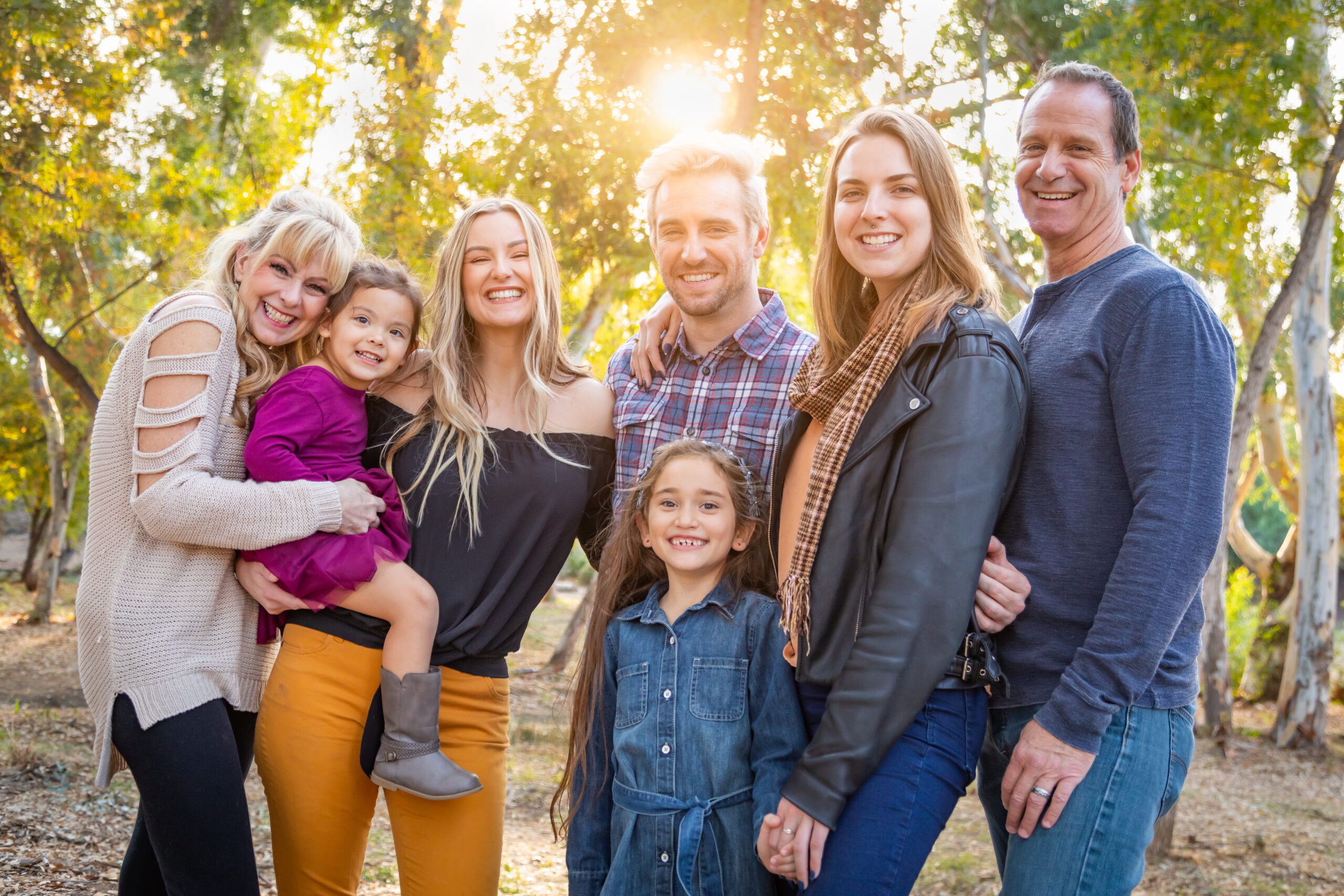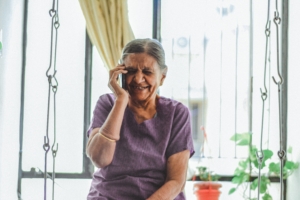Taking care of an aging parent or loved one isn’t just a one-person job—it’s a family affair. Involving extended family in caregiving can make a world of difference. When family steps up not only easing the burden on primary caregivers but also creating a supportive environment for everyone involved to navigate the caregiving together.

Why Involve Extended Family?
When Linda’s mom and dad needed at-home care, Linda took on the primary caregiving role. Linda is the oldest of 6 siblings. Initially, she felt overwhelmed by the amount of time and the responsibility. Sometimes 10-12 calls per day. Managing her own family while attending to her parents needs while continuing to work was no small feat. Linda lives an hour away from her parents and is the oldest of 6 siblings. Recognizing the challenge, it was not easy to bring the family together and figure out how they could each contribute.
2 sisters lived out of town on opposite sides of the coast and Linda’s parents are in Illinois. A 3rd sister spends months at a time in Italy. A 4th sister and her brother are also within an hour of their parents. Linda and one other primary caregiver ( that is the one that spends months in Italy) who is a retired social worker bear the brunt of the caregiving responsibilities. With Linda as the nurse and her sister as the social worker the rest of the family found them to be the primary caregivers by default.
With her mom now in hospice and her dad with severe dementia they refuse to go to a senior living that may afford them some extra help and care that they need.
This is a recipe for disaster and Linda was burning out fast.
Navigating the caregiving together means including extended family members in caregiving provides a holistic support system that can significantly reduce stress and enhance the overall care provided. According to the National Alliance for Caregiving, 80% of adults in the U.S. who need long-term care rely on family members for assistance. However, 45% of family caregivers feel they don’t have enough support from their family, as reported by AARP.
Benefits of Extended Family Participation
- Reduced Stress for Primary Caregivers: Sharing responsibilities can prevent burnout and ensure that no single family member feels overwhelmed.
- Enhanced Support for the Care Recipient: With more hands on deck, the person receiving care benefits from varied interactions and consistent support.
- Strengthened Family Bonds: Working together for a common cause can bring family members closer.
Practical Tips for Navigating the Caregiving Together
1. Open Communication
Keeping everyone in the loop is crucial. Start by organizing a family meeting to discuss care responsibilities. Use this time to lay out the care needs, share your concerns, and listen to others’ perspectives. Grab our free Family Meeting Caregiving Agenda HERE.
Scheduled check-in calls can be done by any family member no matter where they live. This can be very helpful in reducing unexpected calls from your parents at inconvenient times. Work related interruptions are reduced.
2. Scheduling and Task Delegation
Create a shared calendar where family members can sign up for different tasks. Whether it’s grocery runs, medical appointments, or simply spending time with the loved one, having a clear schedule helps everyone know what’s expected. You might find our caregiving task delegation checklist helpful here too.
3. Use Technology to Bridge the Gap
Geographical distance can be a challenge, but technology is a great equalizer. Video calls, shared documents, and family group chats can keep everyone updated and engaged, regardless of where they are. Decide on the best way to communicate. Skype, text, Facetime, Zoom, etc.
4. Be Flexible and Understanding
Remember that everyone has their own commitments and limitations. Flexibility and understanding go a long way in ensuring that caregiving is a collaborative effort.

Tips to Schedule Regular Family Meetings:
Regularly discuss and divide caregiving tasks fairly among siblings to ensure everyone knows their role. Get help with our free guide and template “Family Caregiving Meeting Agenda”
- Open Communication:
Be open and transparent about each other’s abilities, time, and resources to ensure a balanced approach that works for everyone.
- Leverage Each Other’s Strengths:
Encourage siblings to take on specific responsibilities that align with their strengths and availability. Learn each Sibling’s Zone of Genius.
- Share Updates and Milestones:
Keep each other updated about the care recipient’s progress and milestones to foster a sense of teamwork and accomplishment.
Emotional Support
Sharing caregiving responsibilities not only lightens the load but also fosters a supportive family environment:
- Reduction of Isolation:
Shared responsibility can significantly reduce feelings of isolation and overwhelm often experienced by primary caregivers.
- Enhanced Quality Time:
Sharing tasks allows more quality time with the care recipient, enhancing the caregiver’s overall well-being. The primary caregiver often does not have the luxury of being the son or the daughter. Help from siblings can ensure each sibling has the opportunity to be “just” the son or daughter once in a while.
- Support Network:
Open communication among siblings can provide a strong support network, ensuring no one feels alone in their caregiving journey.
Real-Life Examples
Let’s get back to Linda’s. One of the things that helped improve the situation is that each sister that lived on opposite coasts, agreed to come and spend a week to 10 days vacation this past summer. Linda said she was unavailable at this time and her sisters who overlapped their vacations were in charge of mom and dad.
This was “eye-opening” for them. They couldn’t believe how much work was involved and what Linda was going through. Linda discussed with them how they could help from a distance. For more tips on this subject, you may want to view our video from a past Tuesday Tips: Getting Help from Long-Distance Siblings.
Things have gotten better and her family is stepping up to take on more responsibilities. This is allowing Linda to reduce her stress and even got to stop by to see her dad just to spend time with him for his birthday!
A Community Example saw neighbors coming together to support an elderly resident. This demonstrated that caregiving can extend beyond immediate family, showcasing the power of community.
In my family’s case, we organized a family meeting to discuss how we could all contribute to my grandmother’s care. My aunt, who lived in a different state, coordinated visits and sent helpful care packages. My cousins and I pitched in with household chores and provided company to my grandmother. This not only eased the burden on my mom but also brought us closer as a family.
Overcoming Challenges
Differing Opinions
Open and respectful communication is key. Regular family meetings can help address any differences in care approaches, ensuring that everyone’s voice is heard.
To avoid impasses it is critical that your parents have their “affairs in order.” An advance directive indicates their wishes when they are not able to make the healthcare decisions known.
A power of attorney for healthcare or a designated representative can assign responsibilities ahead of time.
If all the siblings can agree to honor the wishes of mom and dad there is no need for disagreements. Again, you each may have a differing opinion on how things should go, but if the parents’ wishes are at the forefront everyone can agree to do what mom and dad want.
Geographical Distance
Utilize technology to stay connected. Video calls and updated shared documents can keep distant family members involved.
Learn more about what types of things can be done from long-distance as well as the challenges of bring siblings together with our video, “
Unequal Time Commitments
Be realistic about what each family member can contribute. Even small tasks can make a big difference. Each sibling has their own family. Some have more availability than others. Each sibling contributing to the best of their ability should be respected.
Lack of Awareness
Educate extended family members about the care needs and how they can help. Sometimes, people want to help but don’t know how.
Privacy and Sharing
Balance between sharing necessary information and respecting privacy. Clear communication helps in setting boundaries.
Coordinating Schedules
Use shared calendars and regular updates to keep everyone on the same page.
Conclusion
Involving extended family in caregiving is not just beneficial—it’s essential. It fosters a supportive environment that not only eases the burden on primary caregivers but also enhances the quality of care provided. Open communication, flexibility, and the willingness to use technology are key to making it work.
Ready to get your family involved in caregiving? Grab our free Family Caregiving Meeting Agenda Template and start your collaborative caregiving journey today!
By fostering a shared sense of responsibility, families can create a nurturing and supportive environment for their loved ones. Remember, it takes a village—and that village starts with family.
Thanks for taking the time to spend a few minutes with us. We have listed a few resources for you on this topic. Feel free to visit our website and click the “Free Resources Tab” for more great resources.
Take care,
Pam and Linda,
Your Nurse Advocates
“Compassionate Care for Aging Adults with Peace of Mind for the Adult Children”
Resources
Your Nurse Advocate Free Resources
Free Siblings Guide to Caring for Aging Parents Checklist
Sharing Caregiving Responsibilities: National Institute on Aging




